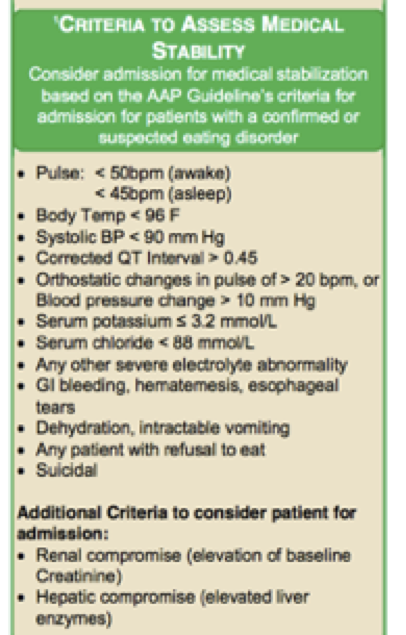
Adolescent females can present with a wide spectrum of gynecologic complaints and the differential diagnosis can be broad. It is important for providers to be familiar with common gynecologic conditions and their treatment, and when it is appropriate to refer to or consult a gynecologic specialist or refer to the emergency room (ER). Below is an overview of some of the most common adolescent gynecologic diagnoses and management recommendations.
Abnormal Uterine Bleeding (AUB)
AUB is defined as menses outside the range of normal defined as: every 21-45 days, last < 7 days, and < 6 pads or tampons per day. Menses can be irregular for 2-3 years after menarche, however, no adolescent should go more than 3 months without a menses. The most common causes of irregular menses and/or prolonged heavy menses include anovulation due to endocrine causes or immaturity of the hypothalamic pituitary axis and bleeding disorders, the most common being Von Willebrand Disease. Work up for irregular menses includes TSH, Prolactin, LH, FSH, Estradiol, 17 OHP, testosterone, and gonorrhea/chlamydia if sexually active. A bleeding disorder work up is warranted if girls are consistently having prolonged heavy menses leading to anemia, flooding, doubling up pads, or other concerning symptoms such as easy bruising or gum bleeding. Recommended work up includes CBC, coagulation panel, TSH, and Von Willebrand Panel. Menses can be controlled with combined (estrogen/progesterone) hormonal contraceptives (pill, patch, ring) or progesterone only options (pill, injection, arm implant, and intrauterine device) which are ideally initiated after hormone work up for AUB is completed. Girls warrant referral to the ER if they have prolonged bleeding leading to significant anemia (hemoglobin < 8), soaking 1 pad or tampon per hour, or have symptomatic anemia. Heavy menstrual bleeding can be stopped acutely with the assistance of combined hormone pill taper or progesterone only pill taper (e.g. norethindrone acetate).
Abdominal and Pelvic Pain
The differential diagnosis for gynecologic causes of abdominal pain is broad including: dysmenorrhea, ovarian masses, pelvic inflammatory disease, and mullerian anomalies. Treatment for dysmenorrhea includes scheduled NSAIDS starting 1-2 days prior to menses and lasting throughout followed by hormonal contraception if treatment fails. Persistent abdominal pain not relieved by NSAIDS or acute severe pelvic pain warrants a pelvic ultrasound to evaluate the uterus and adnexa (ovaries/fallopian tubes). Adnexa > 5 cm with severe abdominal pain, nausea and vomiting warrant ER evaluation given the concern for ovarian torsion. Pelvic inflammatory disease is defined as uterine, adnexal, or cervical tenderness plus abdominal pain and should be prophylactically treated in any girl who is sexually active. Reasons for referral to the ER include nausea/vomiting, unable to tolerate oral medications, fever, or failed outpatient treatment. Obstructive mullerian anomalies such as imperforate hymen or non-communicating uterine remnants should also be considered when a patient has cyclical monthly pain or on examination has breast development and no vaginal opening. Patients with these diagnoses warrant ER evaluation if they have uncontrolled pain or difficulty with urination.
Vulvar Trauma and Genital Ulcers
Straddle injuries are very common and warrant ER evaluation when a large laceration is present, persistent bleeding, or large vulvar hematoma causing severe pain or inability to urinate. Most vulvar hematomas, though frightening on examination, will resolve with conservative management (NSAIDS, ice, rest) on their own. Lipshultz or aphthous vulvar ulcers should be in the differential for genital ulcers. It is a diagnosis of exclusion after diagnoses such as HSV. They are commonly caused by a viral illness (e.g. upper respiratory illness or gastroenteritis) and typically present 3-4 days after prodromal viral symptoms. Treatment is symptomatic including scheduled pain medication and topical or oral steroids. Indications for referral to the ER include uncontrolled pain and difficulties with urination.
Pediatric and Adolescent Gynecology in Atlanta!
Krista Childress, MD and Abigail Smith, PA-C are two pediatric gynecology providers at Children’s Healthcare of Atlanta that see patients birth to 21 years of age and treat a broad spectrum of gynecologic conditions from menstrual issues, contraceptive counseling, pre-pubertal complaints to surgical conditions including ovarian cysts and uterine/vaginal abnormalities. Don’t hesitate to reach out to Krista Childress, MD or Abigail Smith, PA-C for consultations, clinical questions, or patient referrals. They can be contacted at krista.childress@emory.edu or Abigail.smith@choa.org or Pediatric and Adolescent Gynecology Clinic at (404)-785-1491. Please see their website for information and referral links: https://www.choa.org/medical-services/gynecology.
Claim CME Credit by clicking link below:
https://choacme.co1.qualtrics.com/jfe/form/SV_aVrHwEBPKCUSeYl


